The clues to understanding Edward Burne-Jones’s enigmatic oeuvre are scattered throughout the remarkable survey currently at Tate Britain. The first Burne-Jones exhibition at Tate since the centenary of the artist’s birth in 1933, it seeks to liberate him from his posthumous designation as a fine artist, emphasising the craft and context of work that has divided opinion ever since.
The show opens with black-and-white ink drawings by the young artist, fresh from his apprenticeship with Dante Gabriel Rossetti, whom he had sought out after abandoning his Oxford degree. Burne-Jones’s use of bold black lines and careful shading translated readily into designs for stained glass, a medium in which he proved prolific, producing hundreds of designs over his career. Nearby, some small images executed in metallic paint on a dark background echo the gilt-and-gesso figures on a painted wooden piano panel. Elsewhere, an illustration of Sidonia von Bork, a character from a gothic romance, is more an exercise in recreating Renaissance costume than an attempt at portraiture.
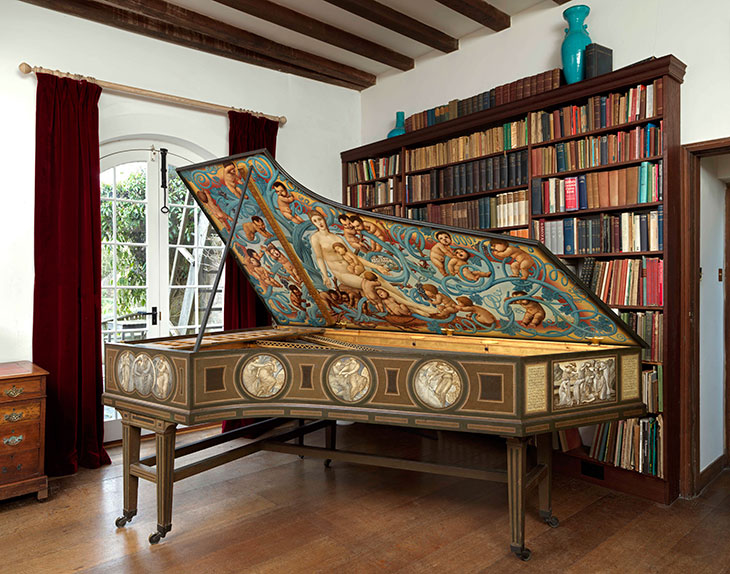
The Graham Piano (1879–80), Edward Burne-Jones
Everywhere, the signs point to crossover with the applied arts, yet at first these relatively minor works are overshadowed by the exquisite and monumental paintings on display. The exhibition devotes a whole room to Burne-Jones’s working process, before focusing attention on his exhibition pictures, portraits and series paintings. The curators have brought together more than 160 works from 39 collections, including well-known pieces such as The Beguiling of Merlin (1872–77), which caused a sensation when exhibited at the Exposition Universelle in 1878, and the monumental Wheel of Fortune (1883), a towering masterpiece that contributed to Burne-Jones’s popularity among the European Symbolists.
Yet somewhere along the way, the strangeness of these images becomes overwhelming. The blank loveliness of the figures creates a dreamy otherworldliness that modern audiences have responded to with everything from adulation to disgust and alarm. The uncanny feeling mounts in the two rooms devoted to Burne-Jones’s series paintings. The metallic tones and unseeing eyes of the Perseus series, commissioned in 1875 by future Prime Minister Arthur Balfour, are positively chilling, while the soporific quality of an immersive display of the Briar Rose cycle is such that one wonders why the curators didn’t include anticipatory couches for visitors overcome with drowsiness.
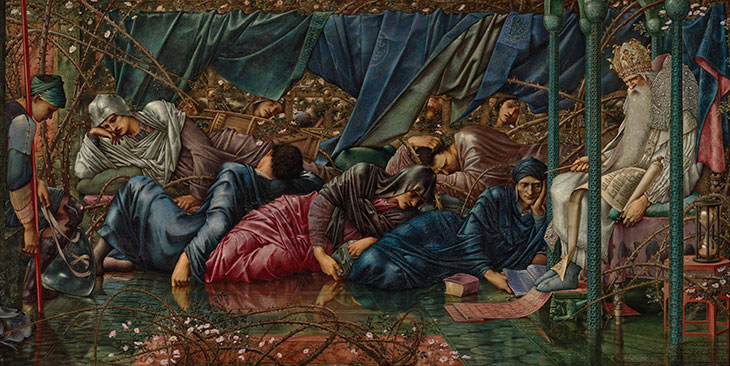
The Council Chamber, from the Legend of the Briar Rose series (detail; 1885–90), Edward Burne-Jones. The Faringdon Collection Trust
Burne-Jones was entirely capable of animating his subjects with personality and vigour. He peppered his correspondence and personal papers with caricatures, evoking himself – overworked, despairing, baleful – and his lifelong friend and collaborator William Morris – robust, endearing, impatient – in a few quick, comedic strokes of a pen. A portrait of his wife, Georgiana, shows a thoughtful woman with intelligent eyes. If she is silent, it is due to Victorian decorum rather than a lack of things to say.
Why, then, are these expressive powers not evident in the paintings for which Burne-Jones is famous? The explanation comes in the exhibition’s concluding section, devoted to the textile, book-illustration and stained-glass commissions which provided his most regular source of income. ‘Burne-Jones,’ the wall text begins, ‘was in essence a decorative artist.’
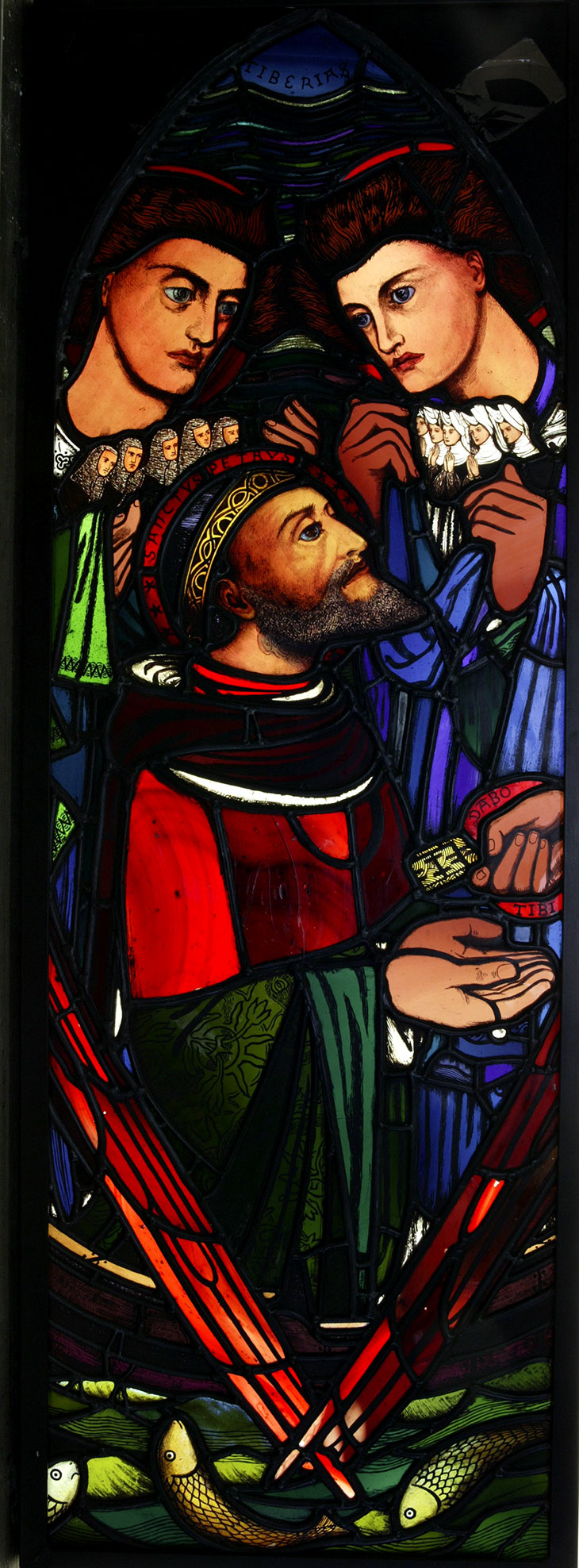
The Calling of St. Peter (c. 1857), Edward Burne-Jones. Victoria and Albert Museum
As the foremost figurative artist in the Arts and Crafts movement, Burne-Jones was part of a circle that resolved to eradicate the barrier between fine and applied art. The old hierarchy has remained stubbornly intact, however, and a modern audience is still conditioned to separate painting from the decorative arts. For better or worse, we expect paintings to ‘speak’ to us in a personal way, which Burne-Jones’s pictures resolutely refuse to do. Despite the array of familiar faces animating The Golden Stairs (1880), which includes portraits of Burne-Jones’s and Morris’s daughters, viewing it is akin to watching film footage with the sound switched off. One maiden gazes out of the canvas but she looks past you, not at you, entirely unaware of your presence. There is something unsettling and even frustrating about being so unceremoniously shut out by the evasive beauty of Burne-Jones’s world.
Yet from the perspective of decorative art, the matte muteness of Burne-Jones’s paintings, achieved through his idiosyncratic use of materials, thinly layered, is perfectly apt. Designs for Balfour’s Perseus series show the paintings integrated into a decorative frieze filled with stylised acanthus leaves and including relief panels in mixed media. In this context, his paintings’ architectural stillness, with their echoes of the sculptural musculature of Michelangelo and the placid frescos of Piero della Francesca, aren’t eerie at all.
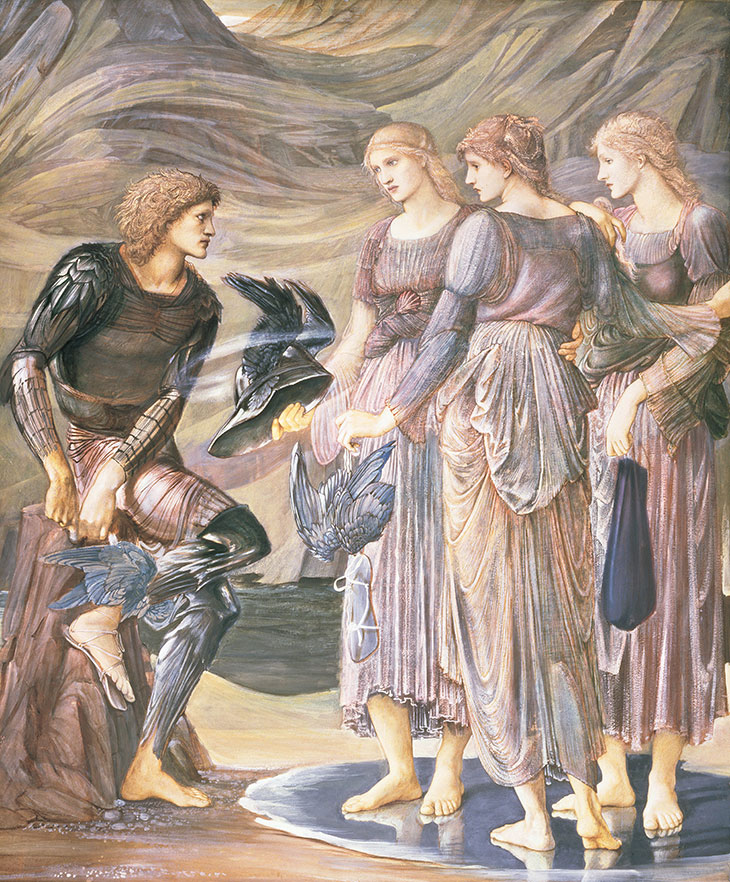
Perseus and the Sea Nymphs (The Arming of Perseus) (1877), Edward Burne-Jones. Southampton City Art Gallery
Laus Veneris (1873–78), on loan from the Laing Art Gallery in Newcastle, neatly sums up Burne-Jones’s approach. In this saturated and opulent work, a richly ornamented background pushes through the figures grouped in the foreground, eliminating the gap between subject and decoration, and dismantling the distinction between fine and applied arts. As this nuanced exhibition makes clear, Burne-Jones’s world is not one of dreams, but of decoration. He would have seen nothing wrong in that.
‘Edward Burne-Jones’ is at Tate Britain, London, until 24 February 2019.
Unlimited access from just $16 every 3 months
Subscribe to get unlimited and exclusive access to the top art stories, interviews and exhibition reviews.

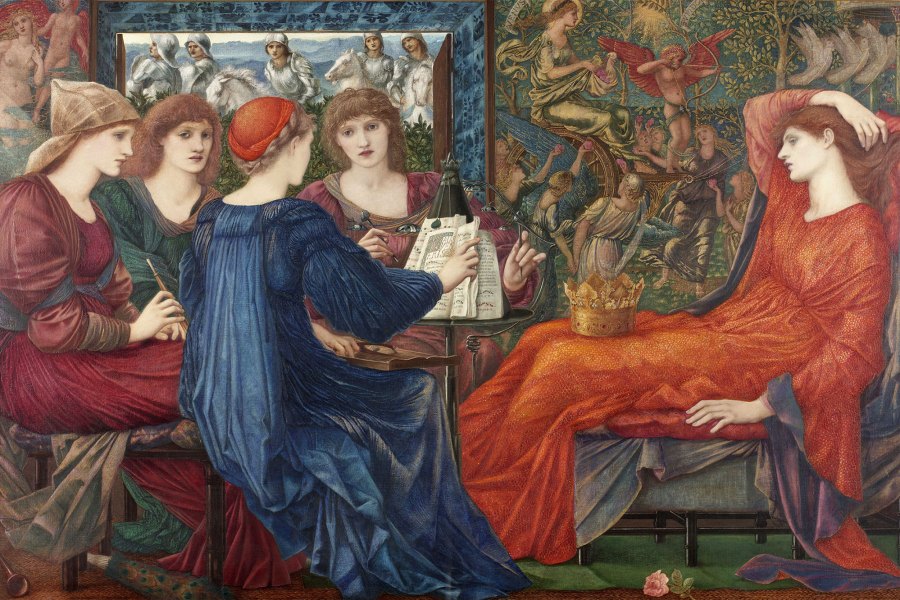
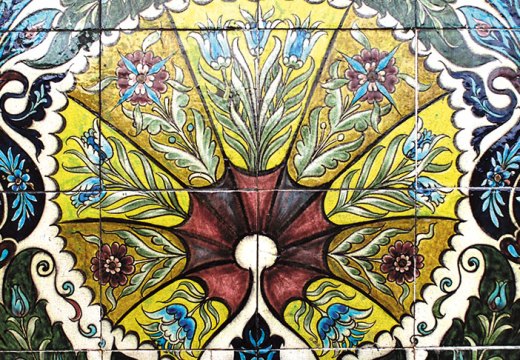
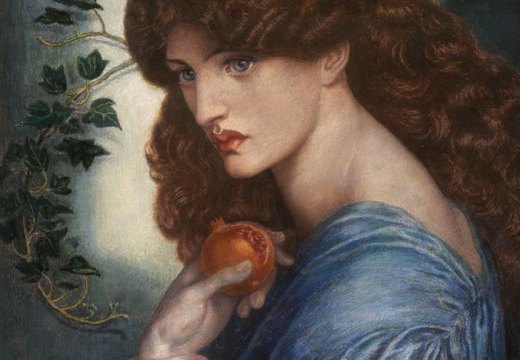
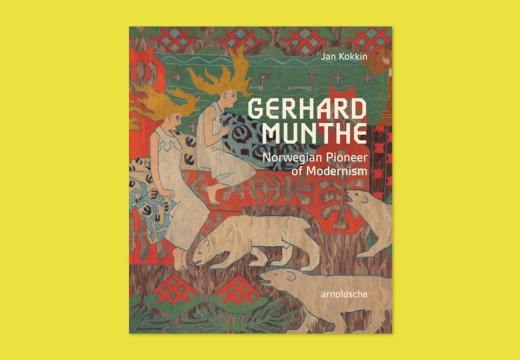









![Masterpiece [Re]discovery 2022. Photo: Ben Fisher Photography, courtesy of Masterpiece London](http://www.apollo-magazine.com/wp-content/uploads/2022/07/MPL2022_4263.jpg)
It’s time for the government of London to return to its rightful home